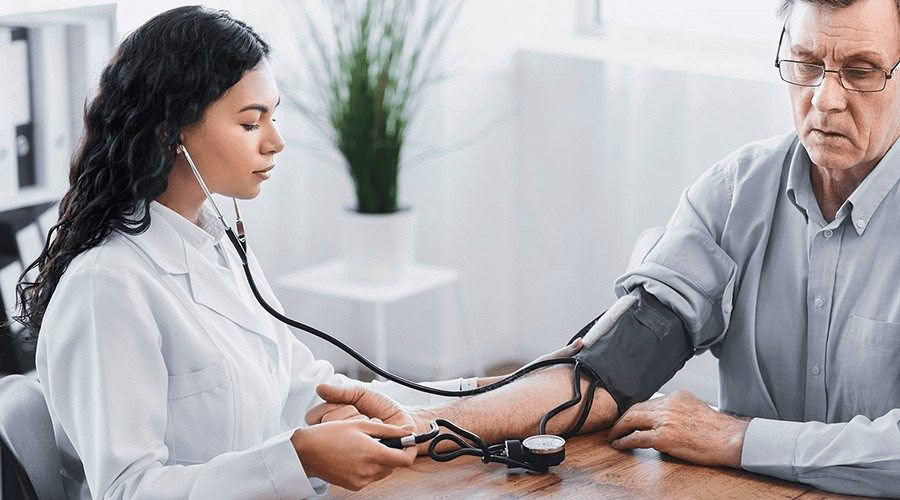

An arrhythmia is an atypical heartbeat that is either much faster or slower than expected.
Your heartbeat may be described as chaotic, rather than steady and predictable.
There are several types of arrhythmias. Some are much more likely to be lethal than others. Arrhythmias that originate in the ventricles — your heart’s two lower chambers — are especially dangerous.
But other arrhythmias can lead to life threatening complications as well. This may be the case if they are not effectively managed with medications, procedures, or implantable devices near your heart.
Any significant change in your heart rhythm means your heart may not be able to pump blood efficiently throughout your body.
When the upper chambers of your heart (the atria) are not functioning properly, blood can pool in those chambers, causing a blood clot to form. If the clot is large enough, it could block blood flow to your brain and cause a stroke. A severe stroke can be fatal if not treated within a short time.
Malfunctioning atria can also cause your ventricles to beat fast and erratically. An arrhythmia in your ventricles can cause them to stop pumping blood. This can result in sudden cardiac arrest, an often fatal, event. It can also lead to dizziness and fainting.
Other arrhythmia complications include heart failure. This is the gradual weakening of your heart muscle, which can be life threatening if not treated effectively.
Although COVID-19 is still largely considered a disease of your respiratory system, there is clear evidence that the infection can cause cardiac complications, including arrhythmia. This heart condition is a common lingering effect in people who experience COVID-19 symptoms for months after the infection has apparently cleared their body.
The most common arrhythmia seen in people with long-term COVID-19 is related to an autonomic nervous system condition called dysautonomia. While dysautonomia can be dangerous, it is usually not serious when associated with COVID-19.
In addition to an irregular heartbeat, people with long-haul COVID-19 who experience dysautonomia may have other symptoms:
A 2020 study suggests that the risk of arrhythmia among individuals with COVID-19 is heightened because of “systemic illness” brought on by the infection, rather than as a direct threat to heart function.
A separate study found that among the people with serious COVID-19 infections, about 44 percent had arrhythmia. This prompted researchers to advise clinicians to be aware of the association between arrhythmia and COVID-19 when treating new patients.
A healthy heart beats about 100,000 times per day. The ventricles and atria work in a synchronized fashion to receive blood from the rest of your body, move it into your lungs for oxygen, and then pump it back out to the rest of your body.
But the electrical system that controls your heart rate can sometimes stop working properly, resulting in arrhythmia.
Arrhythmia can originate in different parts of your heart, such as the:
Symptoms may vary, depending on the type of arrhythmia affecting your heart. But signs of the condition can include one or more of the following:
More severe and possible lethal arrhythmias often have more serious symptoms, including:
In cases of life-threatening arrhythmias, sudden cardiac arrest may occur. Someone in cardiac arrest will be unconscious and unresponsive, and they may gasp for breath.
There are two main types of arrhythmias: ventricular and supraventricular. Ventricular arrhythmias originate in your ventricles, while supraventricular arrhythmias start above your ventricles.
Most arrhythmias are also classified as either tachycardia (atypically fast rhythm) or bradycardia (atypically slow rhythm). There are several types of atypical heart rhythms within each of these categories.
While all types of arrhythmias are potentially dangerous, there are some that are less likely to become life threatening.
Supraventricular tachycardia is characterized by episodes in which your heart beats faster than expected. These episodes are often short and may cause no other symptoms. In these cases, no treatment may be necessary.
But if episodes are lengthy, frequent, or lead to other symptoms, then some therapy may be recommended. If your heartbeat is very fast, this can become a life-threatening emergency.
Atrial fibrillation is an arrhythmia that occurs when your atria quiver or beat in a chaotic manner. The primary treatment for atrial fibrillation is taking a blood thinner to prevent blood clot formation and a medication to slow your heart rate when it is in arrhythmia.
Similar to atrial fibrillation, atrial flutter involves a rapid heartbeat, but those beats are somewhat more organized and less erratic.
The more lethal types of arrhythmias tend to be those that originate in your ventricles.
The most dangerous arrhythmia is ventricular fibrillation, in which your ventricles quiver rather than beat steadily in time with your atria. Your ventricles will stop pumping blood to the rest of your body, including your heart muscle. If this happens, sudden cardiac arrest occurs, and a person has only seconds to a few minutes to be revived.
Ventricular tachycardia is a type of arrhythmia that occurs when your heart beats more than 100 times per minute for at least three beats in a row. The rhythm originates from the bottom chamber of your heart. If ventricular tachycardia persists, it can be deadly. This is because your ventricles do not have enough time to fill with blood and pump it out to all the organs and tissue in your body.
Another potentially fatal arrhythmia is a heart block. This occurs when the electrical signals from the upper chambers of your heart cannot travel to the lower chambers. A high-grade heart block is the most severe form of heart block.
When all electrical activity in your heart stops, it is called asystole or flatlining. This can happen for many reasons. If the heart is in asystole, defibrillation will not restore cardiac signal, but CPR may help. Asystole is often fatal, especially if it occurs outside a hospital setting.
An accurate arrhythmia diagnosis requires a heart monitor to record the atypical rhythm. This is usually done with an electrocardiogram (ECG). An ECG involves the use of electrodes placed on your chest and attached by wires to a computer that records the rhythm of your heart and displays it on a screen.
If your heart is not experiencing an arrhythmia at the doctor’s office, you may be advised to use a Holter monitor or other portable device that can be worn for hours or days at a time. This may detect when an atypical rhythm develops in your heart.
Your doctor will also want to know about any other symptoms you may experience, even if they are occasional or fleeting, such as chest pain or light-headedness.
Because ventricular fibrillation often brings on cardiac arrest, it is usually diagnosed in an emergency setting. But in less serious cases of other arrhythmias, an ECG, as well as a measure of your blood pressure and pulse rate, can help a medical expert make an accurate diagnosis.
Some mild arrhythmias may require no treatment. Other arrhythmias may be treated with medication, implantable medical devices, or other surgeries. The goal of treatment is to restore a steady heart rhythm.
In addition to medication, treatment options for potentially lethal arrhythmia may include the following:
If healthy heart function can be restored in people with cardiac arrhythmia, a healthcare professional may recommend an implantable medical device. There are two main types of these used to treat arrhythmias:
· Pacemaker. Also implanted under your skin, pacemakers help maintain a consistent heart rate by sending a steady electrical signal to your heart.
In an emergency, such as cardiac arrest, the use of an automated external defibrillator (AED) may be enough to jolt your heart back into a steady rhythm if there is no ICD present.
In emergency and life-threatening situations where an arrhythmia is present, two types of external electrical treatment may be used:
Another common procedure to treat serious arrhythmias is called cardiac ablation. In this procedure, the doctor inserts a catheter in a blood vessel and guides it to the suspected source of the abnormal rhythm.
Then a small burst of radiofrequency energy is sent from the tip of the catheter to destroy the cells that may be causing the condition. When the procedure uses cold energy to freeze the troublesome cells, it is called cryoablation.
Many risk factors can trigger arrhythmia. Deadly heart rhythms often develop when your heart has been damaged by a heart attack or other serious condition, such as:
Other conditions that do not directly affect your heart but can cause cardiac complications, such as serious arrhythmias, include:
An arrhythmia can sometimes be so mild, no treatment is necessary. But any atypical heart rhythm has the potential to be life threatening. Proper management with the help of an electrophysiologist, who is a cardiologist specializing in heart rhythm disturbances, is advised.
The most dangerous arrhythmias are those that begin in your heart’s ventricles. Speak with your doctor if you have any symptoms, such as the feeling that your heart is not beating as it should.
An ECG or other heart monitor may provide life-saving information about your heart rhythms. An early diagnosis may help you avoid sudden cardiac arrest, stroke, or other lethal complications.